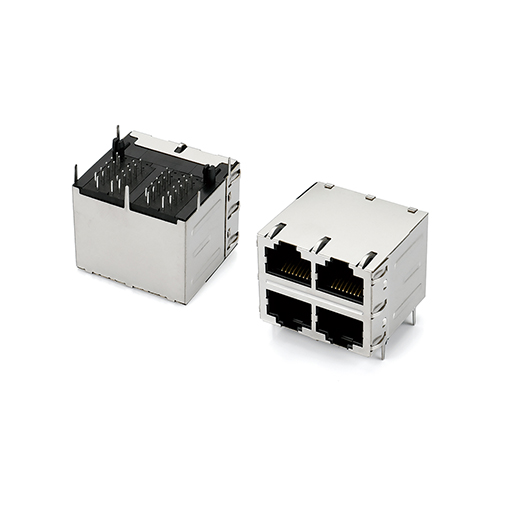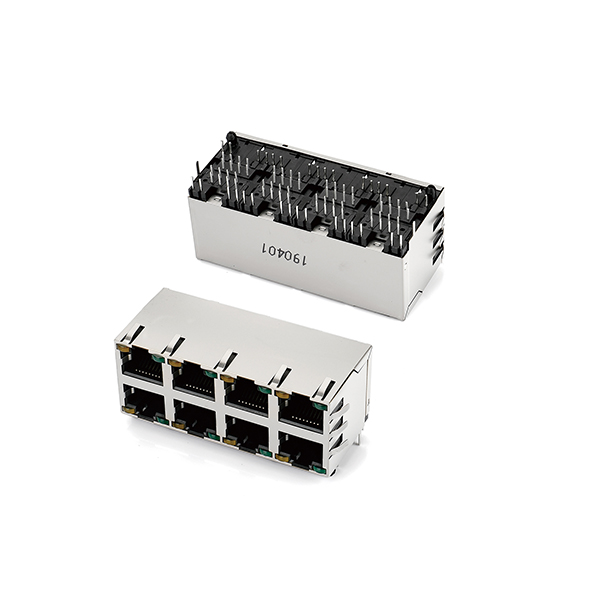The Future Trends of RJ Connectors: From Traditional Network Ports to the Core of Intelligent Interconnected Systems
发布时间:2025-11-14作者:Shenzhen BBJ technology co., LTD点击:26
The Future Trends of RJ Connectors: From Traditional Network Ports to the Core of Intelligent Interconnected Systems
The development of RJ connectors can be seen as a microcosm of the entire wired communication technology landscape. From the initial Ethernet interface standard to today's high-speed, intelligent, and integrated applications, RJ connectors have maintained an irreplaceable position through decades of technological evolution. Despite the continuous development of wireless communication and fiber optic transmission, RJ connectors continue to play a vital role in various fields such as industry, automotive, and communication equipment due to their high reliability, standardized interfaces, and low maintenance costs.
The future positioning of RJ connectors is no longer limited to the role of "network port," but is gradually evolving into "key nodes in intelligent interconnected systems." Traditional RJ interfaces are mainly used for signal connections between computers and network devices. Now, with the rise of the Industrial Internet of Things and intelligent manufacturing, the function of RJ connectors has been given new connotations—they not only transmit data but also undertake multiple tasks such as power supply, signal identification, and environmental monitoring. Taking a new type of PoE+ (Power over Ethernet) switch as an example, its internal RJ connectors can support 90W power output while possessing lightning protection and anti-interference capabilities, achieving simultaneous transmission of communication and power, and improving system integration efficiency.
Performance optimization of RJ connectors in high-speed transmission has also become a key to future competition. With the widespread adoption of standards such as 10GBASE-T and 25GBASE-T, new RJ connectors need continuous breakthroughs in signal integrity, crosstalk immunity, and low contact resistance. Some manufacturers have effectively reduced signal loss and achieved 40Gbps high-speed data transmission by using high-conductivity copper alloys, thick gold-plated terminals, and shielded metal shells. In servers and data centers, these high-performance RJ connectors can significantly improve network throughput efficiency, extend equipment lifespan, and become the foundation of highly reliable systems.
The protective performance of RJ connectors is also continuously evolving. Previously commonly used in indoor environments, IP67-rated waterproof and dustproof RJ connectors have now become mainstream in industrial, outdoor, and new energy fields. These products employ a metal threaded locking design and a double-layer sealing ring structure, enabling long-term stable operation in humid and high-salt-spray environments. Taking new energy vehicle charging pile communication modules as an example, using waterproof RJ connectors can effectively prevent signal interruption and corrosion problems, improving system safety and durability.
The trend towards intelligent RJ connectors is also noteworthy. Future RJ connectors may not just be passive transmission ports, but rather "intelligent nodes" with identification, monitoring, and even self-diagnostic functions. Some innovative products have integrated temperature sensors or identification chips to monitor interface contact status and temperature changes in real time, preventing overheating or loose connections. The emergence of these smart RJ connectors gives traditional interfaces data feedback and safety warning functions, providing a more reliable physical layer foundation for industrial automation and smart factories.
Market competition for RJ connectors is shifting from a "cost-driven" to a "technology-driven" approach. As the global electronics industry moves towards high integration and high reliability, RJ connector manufacturers are improving product consistency and stability through automated production, AI testing, and digital manufacturing. For example, a Shenzhen connector manufacturer introduced a fully automated gold plating inspection system to achieve real-time monitoring of the plating thickness of each RJ connector pin, achieving a product pass rate of over 99.8% and winning long-term cooperation orders in the high-end market for its brand.

The future positioning of RJ connectors will become clearer: they will evolve from a simple network interface into a "stable hub" for the era of intelligent interconnection. Whether in industrial Ethernet, smart transportation, smart buildings, or vehicle communication and energy IoT systems, RJ connectors will continue to play an irreplaceable role. It represents not only a mature connectivity standard, but also a robust, reliable, and sustainably upgradable spirit of connectivity.
